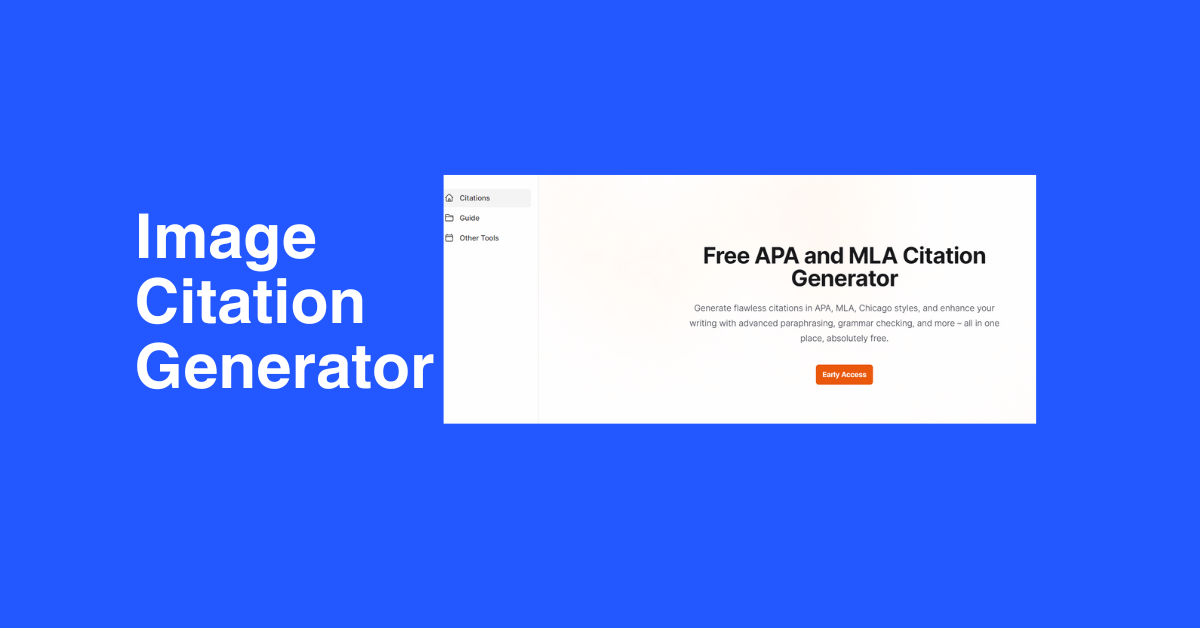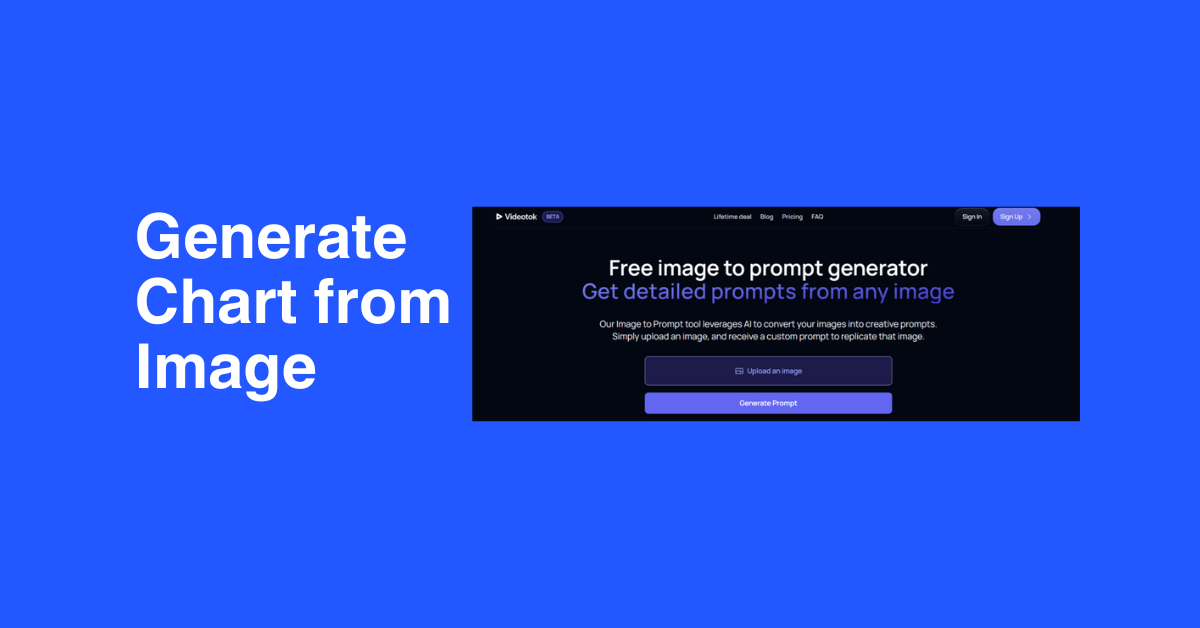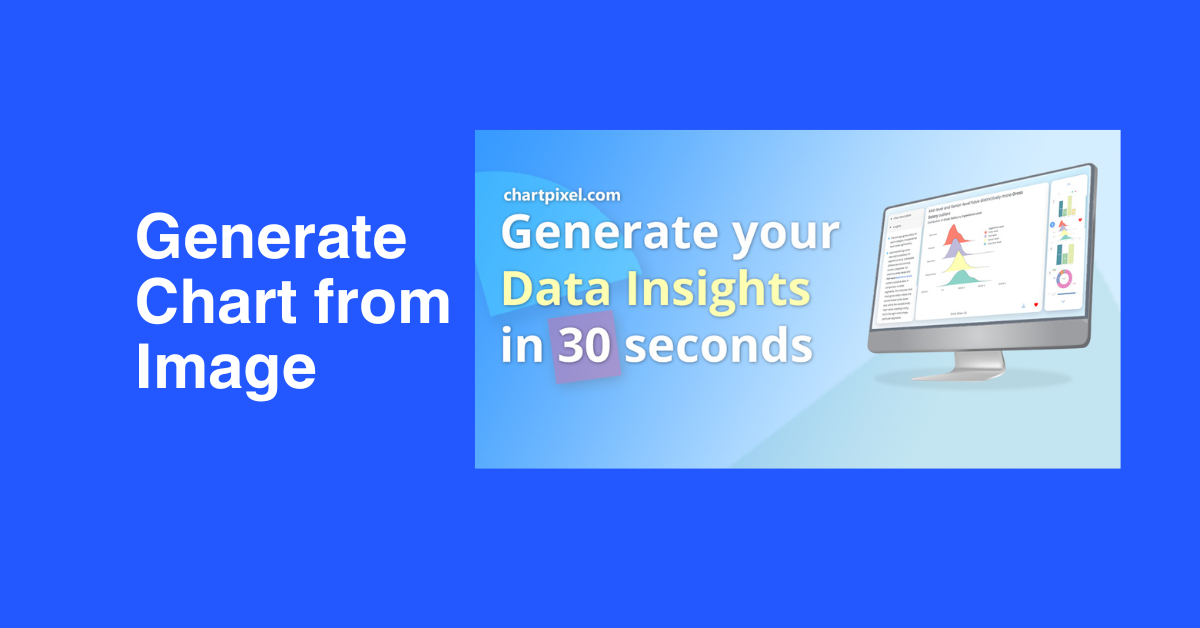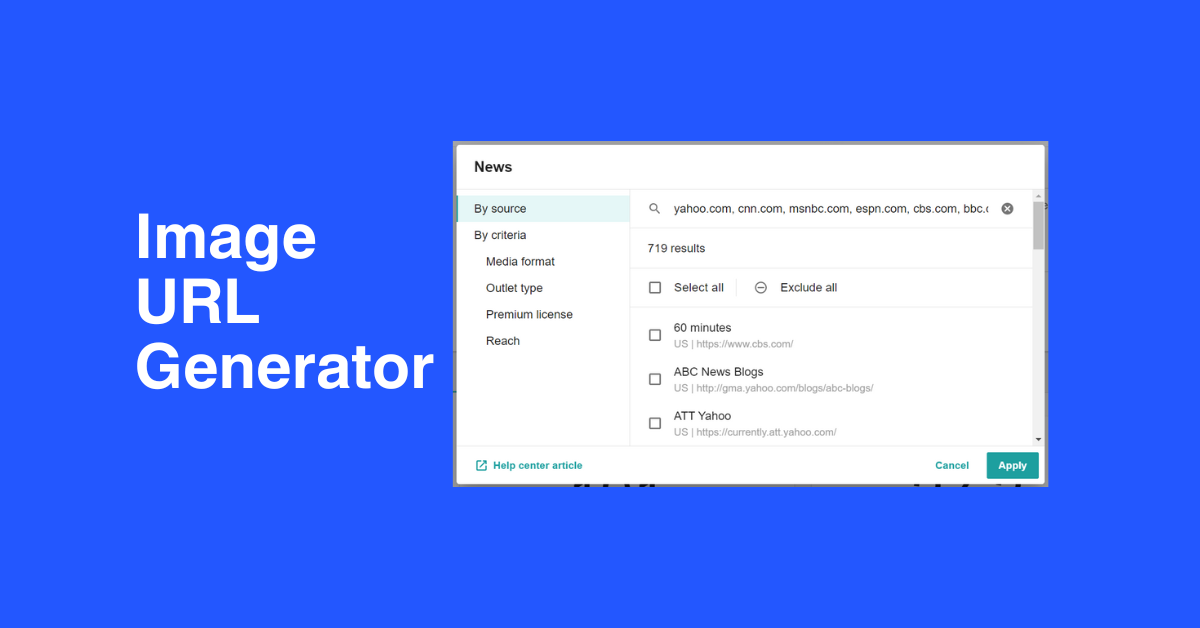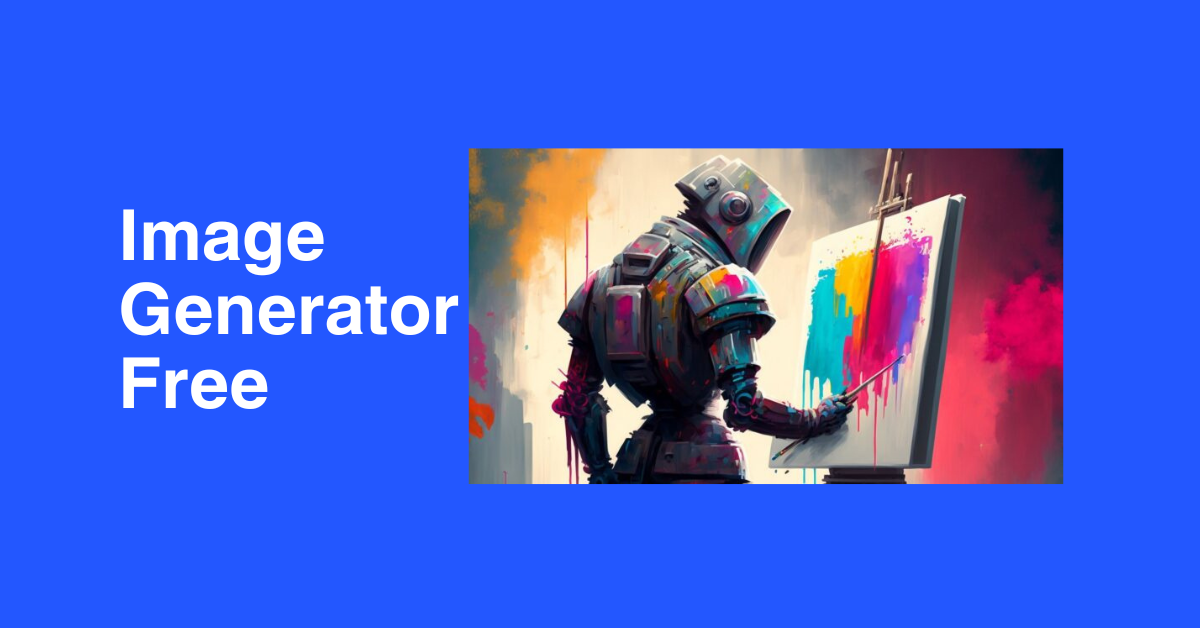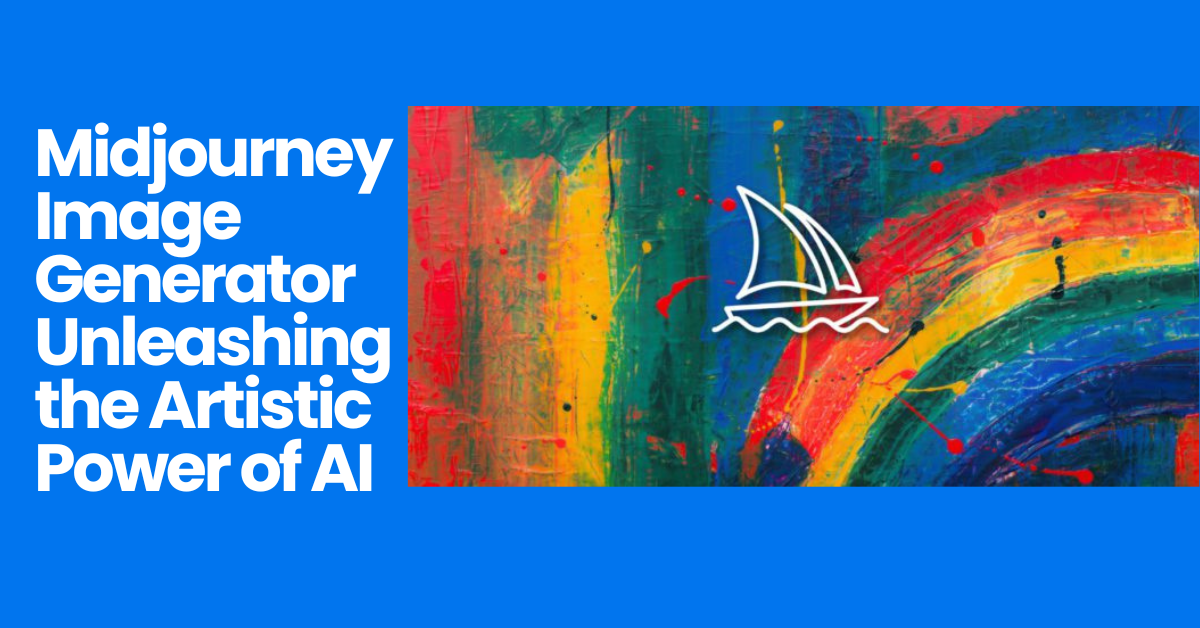
Midjourney Image Generator Unleashing the Artistic Power of AI
- Image Generators
- November 5, 2024
- No Comments
In a world where technology continuously evolves, we are witnessing remarkable advancements in artificial intelligence. One such advancement is the emergence of AI-driven image generators, exemplified by the Midjourney image generator. This innovative tool has captured the fascination of artists, designers, and creative enthusiasts alike, enabling them to transcend traditional methodologies of art creation. The ability to generate stunning images simply through text prompts opens a new frontier for creativity, challenging our understanding of artistic expression and the creative process. In this comprehensive blog post, we will explore the ins and outs of Midjourney, from its functionality and applications to its ethical implications and future prospects.
Midjourney Image Generator

The rise of AI technologies has led to the development of various tools that can create high-quality visual content. Among these, Midjourney stands out as a revolutionary AI image generator that leverages deep learning algorithms to transform textual descriptions into captivating visuals.
What is Midjourney?
Midjourney is an advanced artificial intelligence program designed to generate unique images based on user-defined prompts. By utilizing state-of-the-art neural networks and machine learning techniques, Midjourney interprets input text and produces corresponding visual representations. This powerful tool has captivated artists, designers, and hobbyists, offering them a fresh way to visualize ideas and concepts without the need for extensive artistic skills or software proficiency.
The platform functions through a user-friendly interface, allowing individuals to interact with the AI easily. Users can input specific keywords, phrases, or even detailed descriptions, and within moments, the generator produces a visually striking piece of artwork that embodies the essence of the provided input. This accessibility makes Midjourney suitable for a wide range of users, from professionals looking to streamline their workflow to amateurs exploring their creative side.
How Does Midjourney Work?
At the core of Midjourney’s functionality lies complex algorithms that analyze and interpret language, transforming text into visual output. The underlying architecture typically involves Generative Adversarial Networks (GANs), which consist of two neural networks—the generator and the discriminator. These networks work together to refine the generated images until they meet certain quality thresholds.
When a user inputs a prompt, the generator processes the text, identifying key components and contextual meanings. It then synthesizes these elements into an image, adding layers of detail and stylistic choices that align with the user’s vision. The result is a unique composition that resonates with the creative intent behind the original prompt. The iterative nature of this process allows for continuous improvement, as the AI learns from user feedback and adjusts its output accordingly.
Furthermore, the integration of diverse artistic styles enables Midjourney to produce a wide array of visual interpretations. Users can experiment with different approaches, fostering a dynamic environment for artistic exploration.
Why Choose Midjourney?
One of the compelling reasons to choose Midjourney over other image-generating tools is its emphasis on creativity and community engagement. Unlike other platforms that may prioritize automation and efficiency, Midjourney encourages users to push the boundaries of their imagination by experimenting with prompts and styles.
Moreover, the collaborative aspect of Midjourney—where users can share their creations and draw inspiration from others—enhances the overall experience. This sense of community fosters a culture of learning and growth, making it an ideal choice for anyone looking to expand their artistic horizons.
Unlocking Creativity with Midjourney: An Introduction to the Tool

As we delve into the intricacies of the Midjourney image generator, it’s essential to grasp how this tool unlocks the potential for creativity across various domains. Whether you’re an artist seeking new ways to express your vision or a designer looking to elevate your work, Midjourney offers an unparalleled avenue for innovation.
The Creative Process Reimagined
Traditionally, the creative process involved numerous steps, including brainstorming, sketching, and refining ideas before arriving at a final product. With the advent of Midjourney, this process undergoes a transformative shift. The ability to generate high-quality images from simple text prompts eliminates many intermediate stages, allowing creators to focus on ideation and concept development.
Creativity is often ignited by spontaneity, and Midjourney captures this essence. Users can quickly test out multiple prompts, iterating on their ideas with ease. This flexibility empowers artists to explore diverse themes, color palettes, and compositions without the constraints of conventional methods. The result is a more fluid and organic creative flow, allowing for genuine exploration and experimentation.
Collaboration Between Humans and AI
One of the most fascinating aspects of Midjourney is the collaborative relationship between humans and artificial intelligence. The tool does not seek to replace human creativity; instead, it acts as an extension of the user’s imaginative capabilities.
By harnessing the power of AI, artists can access a wealth of possibilities that might have otherwise remained untapped. The synergy between human intuition and algorithmic precision leads to the emergence of novel ideas and visual narratives that blend personal expression with technological prowess. This collaboration gives rise to fresh perspectives, enriching the creative landscape.
Accessibility for All Skill Levels
Midjourney democratizes art creation, making it accessible to individuals across various skill levels. Artists who may struggle with technical skills can now bring their ideas to life through simple textual descriptions. Conversely, experienced professionals can enhance their workflows, using the tool as a source of inspiration or as a means of rapidly prototyping concepts.
This inclusivity fosters a diverse community of creators, each contributing their unique voices to the collective artistic tapestry. As more individuals engage with Midjourney, the platform becomes a catalyst for innovation, bringing forth new trends and styles that reflect the evolving nature of art in the digital age.
How to Use Midjourney: A Step-by-Step Guide for Beginners
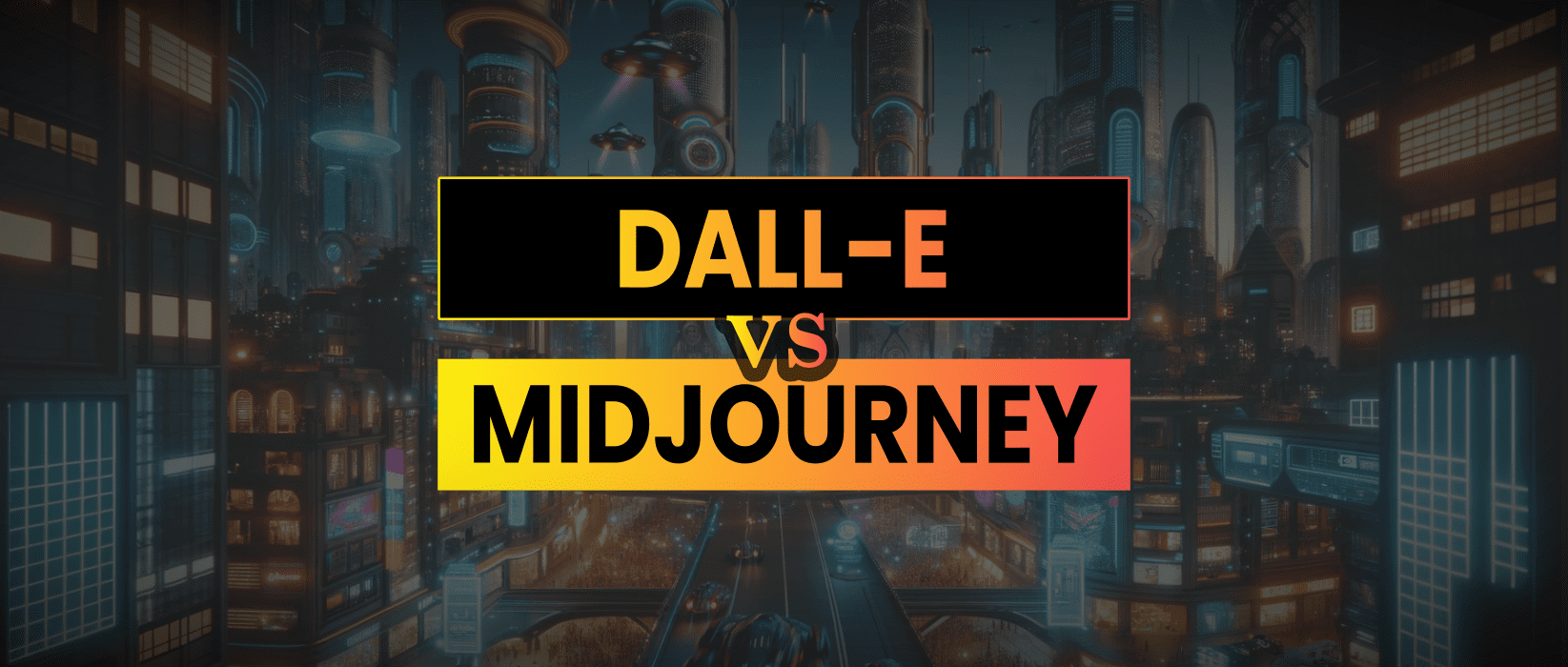
For those eager to dive into the world of the Midjourney image generator, understanding the basic mechanics of its usage is crucial. This section will provide a comprehensive step-by-step guide, ensuring beginners can navigate the platform with confidence.
Getting Started: Setting Up Your Account
To begin your journey with Midjourney, you’ll first need to create an account. Here’s how:
- Visit the Midjourney Website: Head to the official Midjourney website, where you’ll find options to sign up or log in.
- Create Your Profile: If you’re a new user, follow the prompts to set up your profile. This typically involves providing basic information, such as your email address and a password.
- Explore Subscription Options: Midjourney may offer various subscription plans, depending on the level of access you desire. Take your time to evaluate the options and select one that aligns with your needs.
- Familiarize Yourself with the Interface: Once your account is set up, spend some time exploring the user interface. Familiarizing yourself with the layout will enable you to navigate the platform smoothly.
Crafting Compelling Prompts
Crafting effective prompts is essential for generating high-quality images with Midjourney. Here are some tips to consider:
- Be Specific: The more detailed your prompt, the better the AI can understand your vision. Instead of saying “a mountain,” try “a majestic snow-capped mountain overlooking a tranquil lake at sunset.”
- Experiment with Styles: Don’t hesitate to include stylistic preferences in your prompts. For instance, mention if you’d like the image to resemble an impressionist painting or a surrealistic illustration.
- Think Visually: Consider using descriptive adjectives that evoke imagery. Words like “vibrant,” “ethereal,” or “dramatic” can significantly influence the outcome.
- Iterate and Refine: After generating an image, analyze it critically. If it doesn’t align with your vision, refine your prompt and try again. This iterative approach allows you to hone in on your desired aesthetic.
Generating Your First Image
Now that you’ve crafted your prompt, it’s time to generate your first image:
- Input Your Prompt: Enter your carefully crafted prompt into the designated area on the Midjourney platform.
- Adjust Settings (if available): Depending on the tool’s features, you may have options to adjust parameters such as resolution, style, or color palette.
- Hit ‘Generate’: Once you’re satisfied with your input, click the ‘Generate’ button and wait for the magic to happen.
- Evaluate the Result: After the generation process completes, take a moment to evaluate the resulting image. Does it align with your expectations? Is there anything you would like to adjust?
- Save and Share: If you’re pleased with your creation, save it to your device or share it with the Midjourney community. Engaging with others allows you to receive feedback and gather inspiration for future projects.
Joining the Community
One of the most rewarding aspects of using Midjourney is engaging with its vibrant community. To make the most of your experience:
- Participate in Forums: Many users actively participate in online forums dedicated to sharing their creations and asking for feedback. Joining these discussions can foster connections and inspire new ideas.
- Attend Workshops and Webinars: Keep an eye out for workshops or webinars hosted by Midjourney or experienced users. These events often cover advanced techniques and best practices.
- Collaborate with Others: Don’t hesitate to reach out to fellow creators for collaborative projects. Working together can yield incredible results and expand your skill set.
Midjourney for Professionals: Applications in Design, Illustration, and Art
While Midjourney is accessible to casual users, its potential resonates profoundly with professionals in various creative fields. From graphic designers to digital illustrators, the Midjourney image generator presents a plethora of applications that can redefine workflows and enhance artistic output.
Streamlining the Design Process
For graphic designers, Midjourney serves as an invaluable tool for streamlining the design process. Here’s how:
- Rapid Prototyping: Designers can quickly generate a variety of visual concepts based on client briefs or project requirements. This rapid prototyping allows for efficient exploration of ideas, leading to faster decision-making.
- Exploring Variations: Midjourney enables designers to experiment with multiple variations of logos, marketing materials, and layouts. This flexibility cultivates creativity and helps identify the most compelling visual direction.
- Integrating Art with Branding: The AI-generated visuals can be seamlessly integrated into branding strategies. By aligning generated images with brand aesthetics, businesses can create engaging marketing campaigns that resonate with target audiences.
Enhancing Digital Illustrations
Digital illustrators can leverage Midjourney’s capabilities to elevate their artwork. Here are some ways to incorporate the tool into your illustration practice:
- Idea Generation: When faced with creative blocks, using Midjourney to generate initial concepts can spark inspiration. The AI serves as a muse, offering unexpected ideas that can enrich your work.
- Background Creation: Illustrators often struggle with background details. By generating backgrounds through Midjourney, artists can focus on character design and foreground elements, optimizing their creative workflow.
- Style Exploration: Midjourney’s capacity to adopt various artistic styles allows illustrators to experiment with different aesthetics. Whether you want to mimic a specific artist or explore new directions, the tool can facilitate this exploration.
Fostering Concept Art Development
Concept artists play a critical role in various industries, including gaming, film, and animation. Midjourney enhances their workflow in several significant ways:
- Visualizing Ideas: Concept artists can translate abstract ideas into tangible visuals swiftly. This capability is especially beneficial during brainstorming sessions with clients or team members.
- Art Direction Assistance: Utilizing Midjourney to explore potential designs empowers concept artists to present compelling options to stakeholders, facilitating informed decision-making.
- Creating Mood Boards: By generating a series of images that embody a theme or atmosphere, concept artists can create mood boards that communicate the desired tone of a project effectively.
The Power of Prompts: Mastering Midjourney’s Language
Prompts lie at the heart of the Midjourney image generator. The ability to craft compelling prompts directly influences the output quality and relevance of generated images. This section delves deeper into the art of prompt crafting, empowering users to master Midjourney’s language.
Understanding Key Elements of Effective Prompts
To maximize your experience with Midjourney, it’s essential to comprehend the key components that shape effective prompts:
- Clarity and Precision: Clear and precise language ensures that the AI accurately interprets your intentions. Avoid vague terms and instead focus on concrete descriptions that leave little room for ambiguity.
- Descriptive Adjectives: Using vivid adjectives enriches your prompts and adds depth to the generated images. Descriptors like “whimsical,” “dramatic,” or “serene” help convey the emotional tone you wish to capture.
- Contextual Information: Providing context can dramatically influence the outcome. If your prompt describes a scene from a story, including relevant backstory can guide the AI in generating more meaningful visuals.
Experimenting with Different Prompt Structures
Midjourney invites users to experiment with various prompt structures to discover what works best for them. Here are a few strategies to consider:
- Single Focus vs. Multi-Faceted Prompts: Decide whether you want to focus on a singular subject or combine multiple elements into one image. Single-focus prompts allow for detailed exploration, while multi-faceted prompts can yield interesting juxtapositions.
- Narrative-Driven Prompts: Craft prompts that tell a story or evoke a particular narrative. This approach encourages the AI to generate more dynamic compositions and imbue emotion into the visuals.
- Using Questions: Pose questions within your prompts to prompt creative responses from the AI. For example, “What would a futuristic city look like?” can lead to exciting interpretations.
Learning from Generated Outcomes
One of the most valuable aspects of using Midjourney is the opportunity to learn from the generated outcomes. After receiving a generated image, consider the following steps:
- Analyze the Output: Examine the image critically. What elements worked well? Were there any unexpected surprises? This analysis can inform your subsequent prompt crafting.
- Iterate Based on Results: If the generated image deviates from your vision, use the insights gained to refine your prompts. Iteration is a vital part of the creative process, and learning from previous outputs will improve your results over time.
- Engage with the Community: Share your experiences and generated images with the Midjourney community. Engaging with others can spark new ideas and prompt strategies, enriching your creative toolkit.
Midjourney’s Artistic Capabilities: Exploring Styles and Techniques
One of the defining features of the Midjourney image generator is its ability to emulate a diverse range of artistic styles and techniques. In this section, we will explore the various styles available through Midjourney and how users can leverage these capabilities to expand their creative expressions.
Emulating Classical Art Styles
Midjourney excels at replicating classical art styles, allowing users to infuse their creations with historical significance. Some noteworthy styles include:
- Impressionism: The soft brush strokes and focus on light characteristic of Impressionist paintings can be harnessed to create dreamlike landscapes or portraits that evoke emotion.
- Cubism: Users interested in geometric abstraction can utilize Midjourney to generate compositions inspired by Cubist artists like Picasso. This style lends itself well to experimental and fragmented visual narratives.
- Surrealism: The ability to create bizarre, otherworldly scenes reminiscent of Surrealist art allows users to depict dreams and subconscious thoughts, pushing the boundaries of imagination.
Modern and Contemporary Art Movements
In addition to classic styles, Midjourney embraces modern and contemporary art movements, enabling users to explore cutting-edge aesthetics:
- Pop Art: Drawing inspiration from popular culture, users can create vibrant works that celebrate consumerism and mass media. Incorporating bold colors and graphic elements can yield captivating results.
- Street Art: For those looking to channel urban vibes, Midjourney can simulate street art techniques, allowing users to produce edgy and dynamic compositions that resonate with contemporary culture.
- Digital Art: As a nod to the digital era, Midjourney facilitates the creation of art that reflects technological advancements. Users can explore glitch effects, 3D renderings, and pixel art styles seamlessly.
Combining Styles for Unique Creations
One of the most exciting aspects of Midjourney is its versatility in combining different artistic styles to create truly unique works. Here’s how:
- Mixing Genres: Feel free to merge elements from various genres to develop hybrid compositions. For example, blending Impressionism with modern graphic design can yield intriguing contrasts.
- Adopting Techniques: Explore the techniques associated with different styles. You may use watercolor textures alongside digital illustrations to create a distinct visual interplay.
- Personalization: Customize the prompt to guide the AI in creating a style that reflects your own artistic voice. This personalization ensures that the output resonates with your individual identity as a creator.
The Ethics of AI Art: Examining Midjourney’s Impact on the Creative Industry
As the Midjourney image generator continues to gain traction, it raises important ethical considerations regarding the impact of AI-generated art on the creative industry. This section explores these ethical implications, addressing concerns surrounding authorship, originality, and the value of human creativity.
Authorship and Originality Concerns
One of the primary ethical dilemmas surrounding AI-generated art is the question of authorship. Who owns the rights to an image created by an AI? Is it the person who provided the prompt, or does the AI hold some claim to the work?
- Creative Ownership: The discussion around ownership remains complex. Many believe that individuals who input prompts should maintain ownership rights, yet questions arise regarding the extent to which AI contributes to the final output.
- Originality Challenges: Midjourney generates images based on existing data, raising concerns about originality. Critics argue that AI-generated art may inadvertently replicate elements from established works, blurring the lines between inspiration and imitation.
The Value of Human Creativity
While AI-generated art presents exciting possibilities, it also highlights the intrinsic value of human creativity. The emotional depth and unique perspectives that come from human experiences cannot be replicated by machines.
- Emotional Connection: Human artists often infuse their work with personal narratives and emotions, creating a profound connection with viewers. AI, on the other hand, lacks lived experiences and cannot genuinely empathize with the subjects it portrays.
- Cultural Context: Artistic expressions are deeply rooted in cultural contexts, shaping the themes and motifs that emerge in a given era or locale. AI-generated art may miss nuanced elements that reflect societal values and experiences.
Navigating Ethical Responsibilities
As users engage with Midjourney and similar tools, navigating ethical responsibilities becomes paramount. Here are some considerations for responsible use of AI-generated art:
- Transparency: Be transparent about the use of AI in your creative process. Clearly indicate when an image is generated by AI, maintaining honesty and integrity within the artistic community.
- Respect Existing Works: When drawing inspiration from established art styles or artists, ensure that credit is given where due. Respect for intellectual property is crucial in maintaining the integrity of the art world.
- Fostering Dialogue: Encourage open conversations about the implications of AI art within creative communities. Engaging in dialogue with fellow artists and industry professionals can help shape ethical guidelines that protect both human creators and emerging technologies.
Midjourney’s Future: What’s Next for AI Image Generation?
As we look ahead, the future of the Midjourney image generator holds immense promise. Advancements in AI technology and creative exploration are likely to shape how we engage with art, design, and creativity as a whole.
Evolution of AI Technologies
With rapid advancements in AI technologies, we can expect Midjourney to evolve further:
- Improved Algorithms: Future iterations may see refined algorithms that enhance the accuracy and quality of generated images. The integration of natural language processing could allow for even more nuanced interpretations of user prompts.
- Real-Time Feedback: The introduction of real-time feedback mechanisms could revolutionize the user experience. Users may receive instant suggestions on prompt modifications based on previous outcomes, facilitating smoother iterations.
- Interactivity: Interactive features, such as live collaboration between users and AI, could enrich the creative process. Imagine brainstorming ideas in real time while the AI generates visuals based on ongoing discussions.
Expanding Applications Across Industries
Beyond traditional artistic realms, Midjourney’s applications are likely to extend into various industries:
- Entertainment and Gaming: The gaming industry could benefit significantly from AI-generated assets, such as characters and environments. Midjourney may streamline the creative pipeline for game designers, enhancing production efficiency.
- Advertising and Marketing: Marketers could leverage Midjourney to generate eye-catching visuals for campaigns, creating content that resonates with audiences and maximizes engagement.
- Education and Training: Educational platforms could integrate Midjourney as a tool for teaching art and design principles. Students can experiment with prompt crafting, gaining insights into composition and style.
The Role of Community and Collaboration
As Midjourney continues to grow, fostering a supportive community will remain vital:
- Knowledge Sharing: Encouraging users to share their experiences, techniques, and successes will contribute to collective growth. Online forums, social media groups, and virtual events can facilitate knowledge exchange.
- Collaboration Projects: Creating collaborative opportunities between artists and technologists can yield groundbreaking innovations. Projects that merge human creativity with AI capabilities can pave the way for new artistic movements.
- Inclusive Dialogue: As discussions around ethics and AI art evolve, inclusive dialogue must remain at the forefront. Engaging diverse perspectives will ensure that the development of AI technologies aligns with the values of the creative community.
Comparing Midjourney to Other AI Image Generators: Key Differences and Similarities
As AI-powered image generation tools proliferate, understanding how Midjourney compares to other platforms is crucial. Each tool offers unique features, advantages, and limitations that cater to different user needs.
Core Features and Functionality
- User Interface: Midjourney is celebrated for its intuitive user interface, making it accessible to newcomers. In contrast, some other AI generators may have steeper learning curves, requiring users to familiarize themselves with complex software.
- Prompt Flexibility: While many AI generators rely on structured prompts, Midjourney allows for greater flexibility in language, encouraging users to craft diverse and experimental prompts.
- Image Quality: Midjourney stands out for its ability to produce high-resolution images with intricate details. Some competing tools may compromise on quality, leading to less visually appealing outcomes.
Target Audience and Use Cases
- Artistic Communities: Midjourney caters primarily to artists and creative enthusiasts, emphasizing artistic exploration. Other platforms may target commercial applications, focusing on generating stock images or marketing assets.
- Professional Integration: Midjourney has gained traction among professionals in design and illustration, supporting streamlined workflows. Some AI image generators are better suited for casual users or hobbyists rather than professional applications.
- Community Engagement: The collaborative nature of Midjourney fosters a sense of community among users, encouraging shared learning and inspiration. Other platforms may lack this emphasis on community interaction.
Limitations and Challenges
- Dependence on Prompts: While Midjourney excels with text-based prompts, users must be mindful that the quality of outputs depends heavily on the clarity and specificity of their input.
- Ethical Considerations: Similar to other AI generators, Midjourney faces ethical challenges related to authorship, originality, and the potential impact on traditional art practices.
- Continuous Improvement: While Midjourney is a powerful tool, it is not immune to limitations. Users may encounter situations where the generated images do not fully align with their intentions, highlighting the need for iteration and refinement.
Midjourney Resources: Tutorials, Communities, and Inspiration
To make the most of your experience with the Midjourney image generator, harnessing available resources is essential. By tapping into tutorials, community forums, and sources of inspiration, users can elevate their creative journeys.
Comprehensive Tutorials
- Official Documentation: Start with Midjourney’s official documentation, which provides a wealth of information on getting started, prompt crafting, and advanced features. This resource serves as an invaluable foundation for understanding the tool.
- YouTube Channels: Many artists and creators share tutorial videos on platforms like YouTube. These channels often cover a range of topics, from beginner basics to advanced techniques, providing visual demonstrations of the Midjourney experience.
- Online Courses: Look for online courses focused on AI art and image generation. Platforms like Udemy and Skillshare may offer specialized classes that delve deeper into using Midjourney and exploring creative techniques.
Engaging with the Community
- Social Media Groups: Join Midjourney-focused groups on platforms like Facebook or Discord. These communities are often filled with passionate users who share their creations, seek feedback, and exchange ideas.
- Forums and Discussion Boards: Engage in discussions on forums dedicated to AI art and generative design. Participating in these dialogues can lead to new insights and collaborations with fellow creatives.
- Local Meetups: If possible, attend local art or tech meetups that explore AI-generated art. Meeting others face-to-face can foster connections and inspire collaborative projects.
Finding Inspiration
- Explore Galleries: Many users share their Midjourney creations on platforms like Instagram and Behance. Browsing these galleries can provide you with visual inspiration and prompt ideas for your own projects.
- Art Challenges: Participate in art challenges that encourage users to generate images based on specific themes or prompts. These challenges can stimulate creativity and push you to explore new directions.
- Mixing Influences: Draw inspiration from various artistic sources, including literature, music, and film. Incorporating elements from different mediums into your prompts can lead to unexpected and captivating results.
Conclusion
The Midjourney image generator represents a significant milestone in the intersection of art and technology. By combining the power of AI with human creativity, this innovative tool has opened new avenues for artistic expression and design. Throughout this blog post, we’ve explored the functionalities, applications, ethical considerations, and future prospects of Midjourney.
As we navigate this exciting landscape, it is essential to embrace both the possibilities and responsibilities that come with AI-generated art. By leveraging the strengths of Midjourney while remaining mindful of ethical implications, artists, designers, and enthusiasts can forge a path toward a more inclusive and vibrant creative future. Ultimately, Midjourney serves as a reminder that collaboration between humans and technology can yield extraordinary outcomes, reshaping our understanding of what it means to create.
Looking to learn more? Dive into our related article for in-depth insights into the Best Tools For Image Generation. Plus, discover more in our latest blog post on Craiyon Image Generator. Keep exploring with us!
Related Tools:
Image Generation Tools
Video Generators
Productivity Tools
Design Generation Tools
Music Generation Tools
For more AI tools, explore all categories by clicking here.

